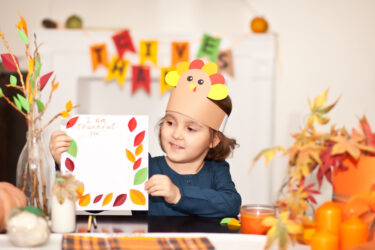It’s hard enough to make the moments count when there’s just one baby. Doubling or tripling the number of babies you care for brings new meaning to “spread thin.” Tips from local moms can help.
As local mom Robin Suvak tells it, the phrase of the month is, “No! MY mama!” The mother of 15-month-old twins Hayden and Riley understands the struggle that ensues when her children compete for her attention. Sharon Davis, a mom of triplets, says she’d love to spend more time alone with each of her children, but it’s nearly impossible. “Once I’m settled down reading a book, playing a game or just talking with one, the other two are hanging on my leg, wanting a drink or needing to go potty,” she says. “There’s only one of me and three of them. The odds are against me,” she adds.
If you’re a “singleton” – the phrase bestowed upon parents of non-twins or triplets, etc. by multiples parents – this may sound foreign. But, if you’re a mom or dad of twins, triplets or more, these scenarios are all-too-familiar.
According to experts, these are common feelings. “With multiples, you have the intensity of having the same needs at the same time,” says Carolyn Palmer, Ph.D., an associate professor of psychology and a mother of twins. “Each one is going to compete for your attention, so you’re constantly feeling torn.â€
“Sometimes I wish that I could clone myself to give them the attention they crave,” says Stephanie Smith, a Lebanon mother of 3-year-old twins.
The Concept of “Alone Timeâ€
Because of feelings like those described above, experts say multiples parents should make every effort to spend time alone with each child.
“It gives you a breather, it gives the child a breather, and then when they come back into the larger family group, they’re not as needy for you,” says Palmer.
It’s also important for the children. “They need to see themselves as individuals and those around them need to see them unpaired,” says Hillary Kruger, M.D., a developmental pediatrician. It’s very easy, even more so if multiples are identical, to see them as a unit. But in order to grow up as happy, secure and independent individuals, their differences need to be supported.
Judi Knecht, an Antioch mom of 15-month-old twins, agrees. “I vowed I would cut my boys’ hair distinctly different and only dress them alike on special occasions.â€
And, because multiples tend to bond so strongly with each other, even at the expense of developing relationships with others, it is crucial to give them the opportunity to bond with other children and family members.
Smith says she and her husband started bathing their twin daughters separately. “We did this because bath time was getting to be too much fun,” she says, “but it also allows one child to clean up the dinner dishes with Mommy, and the other gets a bath given by Daddy.â€
Kathryn Caplenor, a Donelson mother of 5-month-old fraternal twins, says, “Every so often, I take just one boy out with me on errands.â€
It’s the Little Things
Keep in mind that time alone doesn’t have to equate to a full day’s excursion. In early infancy, the simple acts of changing, dressing, carrying and consoling can be considered alone time.
Caplenor says that when her 5-month-old boys happen to be on different nap schedules, “I make sure that I spend some meaningful one-on-one time with the boy who is awake.â€
Nursing is also a great option, says Palmer. “If you choose to nurse each one separately for one or all of the feedings, it can be an ongoing one-on-one time.â€
There’s no exact number on how often you need to be alone with each child, but Meri Wallace, a child and family therapist, suggests a goal of 30 minutes every day. “It doesn’t have to be consecutive – it can be five minutes at a time.â€
As They Grow
As children get older, it may help to keep a schedule. That way, kids will know, “OK, today is Mommy-Daughter day. Next time it will be my turn,” and jealousies are lessened.
Scheduling a “day” can also help boost individuality. Debbie Roth, a Brentwood mom of 4-and-a-half-year-old triplets, suggests giving each child his own day. “The child who has ‘his day’ gets to choose a video to watch in the car, a book to read at bedtime, a favorite meal or a favorite place to eat.â€
Remember, every interaction counts. “The little individual pockets of time really add up,” stresses Kruger. Read a book to one child in the doctor’s waiting room while another is having his ears examined. “You might actually be having routine alone time that you don’t even realize.â€
Keep in mind that it may not be so easy for the children to be separated, especially if they’re used to being with each other 24/7. “Tell them about it ahead of time, so everyone knows what’s coming,” advises Palmer. “I would suggest doing it even with young infants. Although they might not understand the words, they will understand the tone of your voice. You’re communicating to them emotionally that there’s something different going on, and it’s OK,” says Palmer.
Leslie Pepper is a mother of 7-year-old twins and a 19-month-old and is a freelance writer.
making “alone time” count
Here are some tips for making sure your child – a twin, triplet, whatever – feels like he’s the apple of your eye!
- Make eye contact with each child throughout the day.
- Address each child as an individual, instead of always as a group.
- Put one child down for a nap first, and spend 10 minutes singing songs with the other child.
- If you have help, try taking one baby to do errands while leaving the others with a sitter or grandma.
- Join a Mommy and Me class and alternate babies each week.
- Take one child for a special outing once in awhile.
- For weekend errands, split up in the store – Daddy takes one twin in his shopping cart, and Mom takes the other in hers.
- “We bathe the boys one at a time,” suggests Debi Sapolin, a mom of twin boys. “I have one in the tub while my husband is playing with the other in the bedroom, or vice versa.â€




